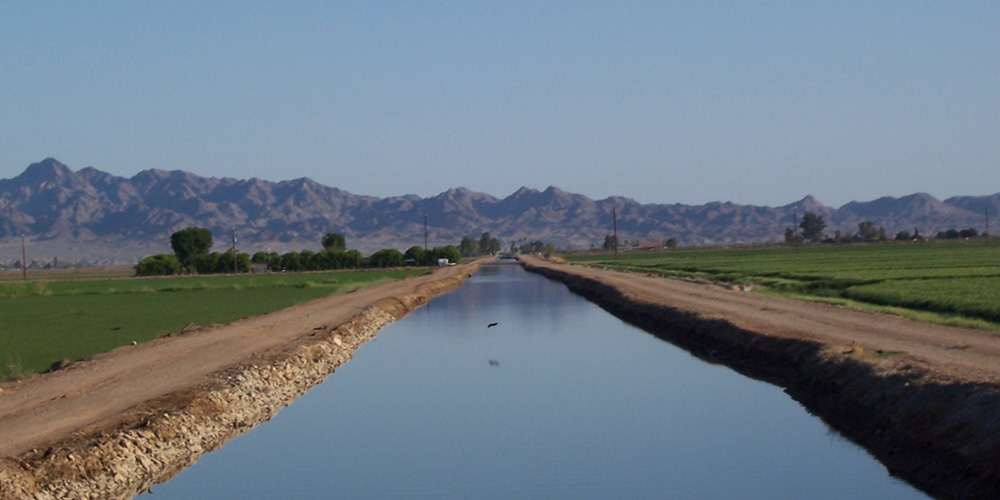
(Photo: Robert Thomson/Flickr)
When California Forward (CA FWD) introduced the California Dream Index (CDI), it became what Leadership Co-Chair Ashley Swearengin called our “North Star.” The Index measures ten trackable indicators for economic mobility. One of those is about access to clean drinking water.
Here’s a staggering statistic that one would think couldn’t be true, but yet it is. Over one million Californians don’t have access to clean drinking and sanitation water. You need clean water to drink, cook and bathe—and yet some of us have to work around our local water supply.
The issue of water — which Governor Jerry Brown often described as a chronic issue in the state — is very complex and critical to economic mobility.
In a recent interview with California Water Board Chairman E. Joaquin Esquivel, he cited progress that’s being made and work that’s left to do.
It starts, he says, with understanding that water is related to all the big issues in the state.
“If we are going to be investing in housing and affordable communities,” he said, “we have to address the water issues related to those efforts.”
In addition to investment in local infrastructure by local water districts, the state has invested $6.3 billion in drinking water, wastewater recycling and groundwater recharge in recent years. Much more work is needed.
Esquivel acknowledged that the diffused management of water is difficult. For instance, there are 7,000 water systems in the state, about half of which are overseen by the Water Board.
Bottom line: how we govern water can be challenging.
Some of the governing entities for these water systems represent lightly populated areas and the result is a small rate payer base and subsequently less ability to invest in infrastructure and expertise.
“95% of violations that we discover come from systems with under 500 connections,” the Water Board chair said. “If you don’t have the rate payer based, it’s hard to invest in testing, infrastructure and what it takes to have a modern water system.”
Assemblyman Joaquin Arambula represents Fresno and the Central Valley and in an interview at the recent California Economic Summit he pointed out that consolidation of some of these systems can help address some of the issues facing people in his district and our state.
“I’d like to remind us, if I can, that when we’re talking about water and representing Fresno County, it’s a lot of my rural farmworking communities that don’t have access to clean drinking water,” said Arambula. “And, while we have agricultural needs, we also have basic human needs, and the right to water is one of those. I would encourage us to meet our obligations as a state and to be making investments, and to help consolidate many of those smaller rural water districts.”
Water Board Chair Esquivel strongly agrees that regional consolidation is important — in fact there have been 176 systems in California that have consolidated in the last four years. Only two of those were forced — California has the authority to order consolidations but they prefer to see “communities working together with a common vision,” according to Esquivel.
Yet there are still 1,889 water systems with under 500 rate payers, and so much more work remains to bring them to a strength where they can survive and adequately serve their residents. Esquivel added that a recent assessment by the Water Board showed there are 600 systems with under 3,300 rate payers that are at financial risk.
“We are making progress but we need to move faster,” he said.
Another water issue that has captured the attention of all Californians is our supply. The intensity of the drought continues to be a problem. All of the state is in some type of drought—and our water supplies are low. In fact, 10 of the 12 major reservoirs in the state have supplies that are below their historical average.
We need a very wet winter, and frankly, the prospects aren’t good.
Esquivel said that reservoirs around the entire western United States are dry and that it’s time to acknowledge that our water systems were built for a climate that simply doesn’t exist anymore—given the impact of climate change on our supply.
“The argument for the status quo of the last century simply won’t work,” he said.
He is hopeful because, as he said, “California always learns and leads.” He added that conservation efforts are working — citing that “urban California is using 17% less water than it was prior to the last drought.”
But it’s not enough. The current drought is severe and the state has asked for another 15% reduction, yet, California has only reduced water usage by 3.9% statewide in September, according to data recently released by the State Water Resources Control Board.
What we all agree on is if more Californians are going reach the California Dream, we must continue to make progress that makes sure that all Californians have access to clean water.
As CA FWD CEO Micah Weinberg said recently, the California Dream Index was created to give Californians a true understanding of what the big issues are and whether we are making progress.
“It will focus our attention on actual results that we are delivering or not delivering on behalf of all Californians,” he said. “We can and must do better.”

